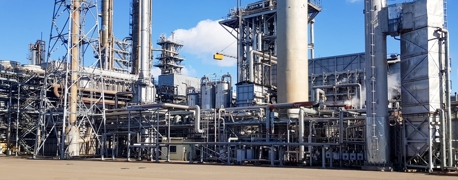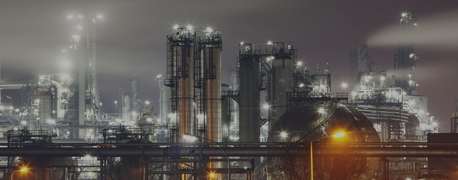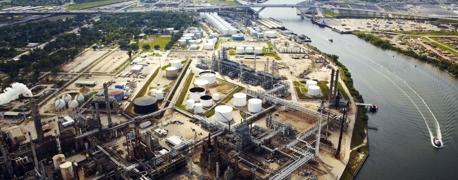Cancer Alley: A Deep Dive into Chemical Exposure in Louisiana’s Industrial Corridor

A little after 8:00 a.m. on August 25, 2023, residents of Garyville, Louisiana, noticed a large plume of smoke coming from the direction of the nearby Marathon Petroleum refinery. Multiple 911 calls were made, but callers were told that the situation was under control and there was no need to evacuate.
Unbeknownst to residents, however, a leak had occurred more than 13 hours before, and a storage tank holding about 26,000 barrels of highly flammable hydrocarbon naphtha had been burning for approximately 90 minutes. Nearly half an hour before the first 911 call, a state environmental official had noted dangerously elevated levels of toxic air pollutants along the plant’s perimeter.
No alert was sent out.
This story is just one of many similar incidents occurring along what is commonly known as “Cancer Alley,” an 85-mile stretch of land along the Mississippi River between Baton Rouge and New Orleans. Hundreds of chemical plants dot the region, making it one of the most important areas for chemical and oil production in the United States. But environmental experts have long been concerned about the effects of such largescale petrochemical production and the health implications for local communities.
In the aftermath of the Marathon refinery leak, which continued for three days and involved two storage tank fires, dozens of people sought medical treatment for symptoms associated with chemical exposure, such as sore throats, eye irritation, headaches, coughing, and difficulty breathing. Some reported an oily feeling on their skin and the taste of oil in their mouths. At least one person later became critically ill. Still, it wasn’t until 16 hours after the first report of a leak that residents were instructed to evacuate—and thousands within the evacuation zone never received the order.
Sadly, incidents like this are all too common in Louisiana’s Industrial Corridor. Lack of adequate regulation, enforcement, and efforts to protect both the environment and human lives has led to an increased risk of chemical exposure for those living in Cancer Alley.
What Is “Cancer Alley?”
Cancer Alley, or Cancer Corridor, is the name commonly used to refer to an 85-mile stretch along the Mississippi River in Southern Louisiana with approximately 150 to 200 petrochemical plants and refineries. The area is home to some of the largest refineries in the Continental United States and accounts for a quarter of the country’s petrochemical production. The region runs through the River Parishes, including West Baton Rouge, East Baton Rouge, Ascension, St. John the Baptist, St. James, St. Charles, Jefferson, and Orleans Parishes.
The History of Cancer Alley
Following the oil and gas boom that occurred around World War II, numerous refineries were established along the Mississippi River. Many of these refineries sought to relocate from more densely populated areas, such as New Orleans and Baton Rouge, to smaller communities.
By the 1970s, federal agencies began to report worryingly high levels of pollution in the area, including contaminants like vinyl chloride and chlorine. The Environmental Protection Agency (EPA) found dozens of pollutants in the drinking water in New Orleans, as well as more than 30 lethal contaminants in the air near Plaquemine. By the 1980s, fires had become such a regular occurrence at a local oil refinery in Good Hope that residents had established their own informal evacuation procedures. Many people noticed that certain plant and animal species were beginning to disappear.
Despite all this, the petrochemical industry continued to flourish—with disastrous consequences.
Between 1988 and 2017, Louisiana saw a 25% rise in toxic releases from chemical plants, even as the number of plants decreased by 16% nationwide. One notable facility in Reserve, Louisiana, has emitted large amounts of chloroprene, the main ingredient in neoprene, in its decades in operation, first under DuPont and, later, under Japanese chemical company Denka. The EPA has noted that residents of St. John the Baptist Parish, the area immediately adjacent to the plant, are 700 times more likely to be diagnosed with cancer from airborne pollutants than the national average.
Key Facilities in Louisiana’s Chemical Corridor
Cancer Alley is home to about 200 petrochemical plants and refineries, many of which are owned and operated by the largest, most powerful names in the industry.
Some of the key facilities in this region include:
- ExxonMobil’s Baton Rouge Refinery – One of the largest petrochemical and refining complexes in the world.
- The Dow Chemical Plaquemine Facility – A petrochemical and ethane cracker plant operated by the largest petrochemical company in Louisiana.
- The Denka Performance Elastomer LaPlace Plant – A large plant, formerly owned by DuPont, that was sued by the federal government for failing to reduce chloroprene levels polluting the nearby area.
- Marathon Petroleum Corporation’s Garyville Refinery – The third largest oil refinery in the United States.
- The CITGO Lake Charles Refinery – The largest of CITGO’s three refineries and the fifth-largest refinery in the U.S.
- The BASF Chemical Complex in Geismar – A sprawling complex that contains 14 chemical and petrochemical plants.
- Noranda Alumina’s Gramercy Refinery – The only major alumina refinery in the United States.
- The Sasol Lake Charles Chemical Complex – Ranked as the second highest “super polluter” facility by the EPA.
- Westlake Chemical Corporation’s Lake Charles Complex – A large chemical and petrochemical processing complex known for a long history of toxic leaks.
The Severe Impact of Chemical Exposure
The numerous plants, refineries, and processing facilities that dot the landscape along Cancer Alley are responsible for manufacturing a wide range of products, from plastics to fertilizers to gasoline. These processes result in a variety of harmful byproducts and the release of toxic chemicals, which leech into the soil, enter the groundwater, and proliferate the air, posing significant risks to both human health and the broader environment.
Risks to Human Health
Residents living near industrial plants are particularly vulnerable to the harmful effects of chemical exposure. Cancer Alley has seen a disproportionate number of health problems, including respiratory issues, neurological disorders, and high rates of cancer, reproductive harm, and birth defects. According to the EPA, certain parts of Southern Louisiana have an estimated cancer risk of more than 700 times the national average due to air pollution, primarily from chemicals like chloroprene, benzene, and vinyl chloride. These toxic substances are known to cause cancer, liver damage, and other life-threatening diseases.
One survey of residents living near the Denka Performance Elastomer plant in St. John the Baptist Parish found that the prevalence of cancer in respondents was more than 70% higher than the national rate, and nearly 50% of children who lived within a mile of the plant experienced headaches, nosebleeds, or both.
Additionally, of those surveyed:
- Almost 40% suffered from regular chest pain and/or heart palpitations
- Nearly 50% suffered from consistent eye irritation and/or pain
- More than 40% suffered from sneezing, coughing, and/or sore throats “most of the time”
- Almost 30% suffered from lethargy and/or fatigue “most of the time”
- More than 30% suffered from regular skin irritation, rashes, and/or itchiness
Environmental Impacts
The impact on the environment is equally dire. Toxic chemicals like benzene, vinyl chloride, and chloroprene contaminate both the air and nearby water sources, including the Mississippi River, harming aquatic life and degrading water quality. Air pollution contributes to smog formation and acid rain, which further damages plant life and soil health. Vegetation in the area is often stunted or weakened, and biodiversity is reduced, disrupting the region’s delicate ecological balance.
The widespread contamination caused by these industries threatens the long-term health of both the environment and the communities that rely on it.
The Need for Increased Regulation
Between October 2020 and November 2023, Human Rights Watch analyzed data from 12 fossil fuel and petrochemical plants in Cancer Alley and found that just one plant was fully compliant with “all three federal laws” reviewed, and only two of the facilities met the standards set by the Clean Water Act. In response to the lack of regulatory accountability, some have called the area a “sacrifice zone,” referring to the apparent sacrifice large corporations and government entities are willing to make when it comes to safeguarding the health and safety of local communities.
Local communities have been vocal about the health impacts of industrial pollution. Advocacy efforts focus on increasing awareness, pushing for stricter regulations, and seeking greater transparency from both companies and regulatory agencies. In April 2024, the EPA announced new regulations targeting over 200 chemical plants nationwide, including those operating in Southern Louisiana. The rules aim to reduce toxic emissions and lower cancer risks for nearby populations by 96%. This initiative marks a significant update to national emissions standards for hazardous organic pollutants.
Even with some of the some of the strictest regulations in the global petrochemical and fossil fuel industry, the U.S. has failed to adequately protect those who live and work near plants and refineries in Louisiana's Cancer Alley. Lack of regulatory enforcement and the continued aggressive expansion of the region’s manufacturing industry will only lead to many more cases of severe illness and death.
Stronger regulation and better enforcement are critical, as is more transparent reporting by petrochemical companies, refineries, and plants when leaks, fires, explosions, and other disasters occur. When big corporations prioritize profits over human lives and the health of entire communities, they must be held accountable. Every time.


